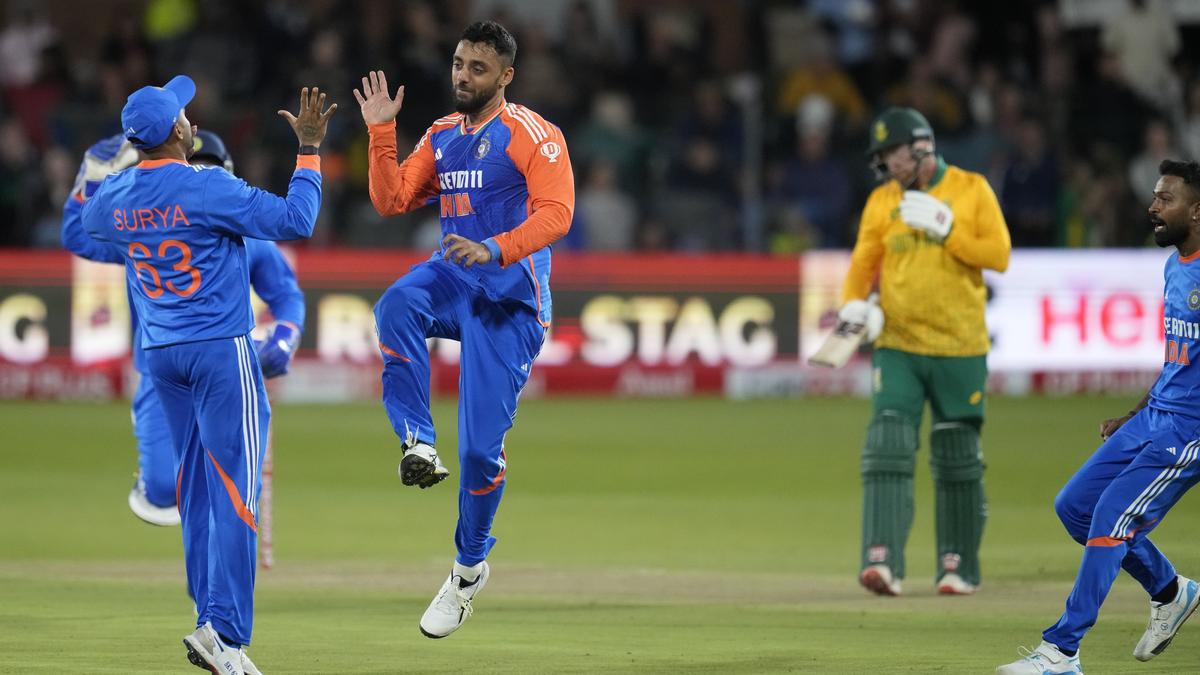
Chakaravarthy’s 5/17 in vain as India lose to South Africa by three wickets in 2nd T20I
The Hindu
INDvSA 2nd T20I: Spinner Varun Chakravarthy’s magical craftiness en route a maiden fifer remained a mere footnote as South Africa rode on the stubbornness of Tristan Stubbs to eke out a three-wicket win over India in a low-scoring second T20I at Gqeberha in South Africa
Spinner Varun Chakravarthy’s magical craftiness en route a maiden fifer remained a mere footnote as South Africa rode on the stubbornness of Tristan Stubbs to eke out a three-wicket win over India in a low-scoring second T20I at Gqeberha in South Africa on Sunday (November 10, 2024).
The four-match series is now level at 1-1. But SA’s victory, which also halted India’s 11-match winning streak, did not come without its share of drama.
The first hint of a topsy-turvy night came when India limped to 124 for six on a quick, bouncy pitch after getting the invitation to bat first.
The Proteas were at one stage 66 for six and 86 for seven, which eventually transpired into 128 for seven, as Chakravarthy continued his international resurgence with a five-wicket haul (5/17).
But SA found two valiant soldiers in determined Stubbs (47 not out, 41b, 7x4) and aggressive Gerald Coetzee (19 not out, 9b, 2x4, 1x6) who added a precious 42 runs for the eighth wicket alliance to carry their side past the tape.
However, Chakravarthy deserves credit for making the match a thrilling affair. The Tamil Nadu man came to the party after pacer Arshdeep Singh dismissed opener Riyan Rickelton in the third over.
Chakravarthy started his dismantling job going through the defences of SA skipper Aiden Markram, who failed to read a wrong’un.











